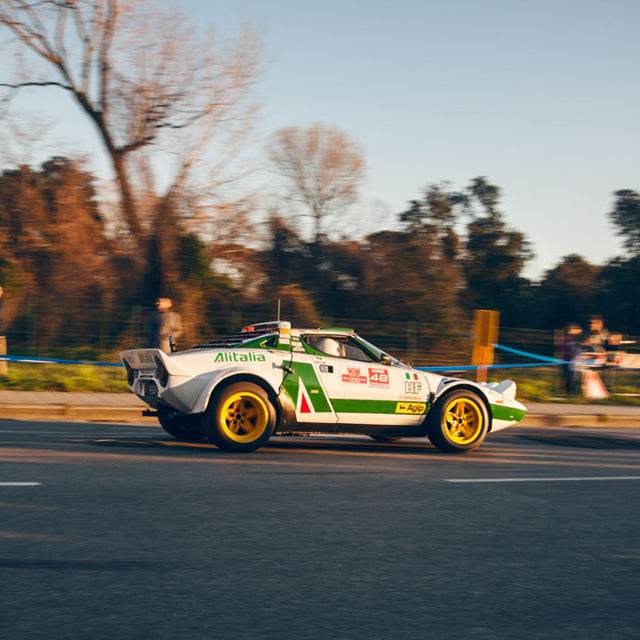Speed Icons.
Every motorsport fan has a favorite driver, a favorite team and a favorite car, but how many can mention a favorite racing car livery, so easily? Fortunately, I can think of many—and that’s why, in my regular series, I’ll be bringing you a collection of outstanding examples of motor racing liveries, both well-known and not-so.


But who am I, Joel Clark? I am the artist behind speedicons.com. You may have seen my work featured here on Petrolicious, in fact. I create works depicting race and road cars, by hand-cutting the very same vinyl that is used when creating racing car (or motorcycle) liveries.
I hope to bring you a mix of well-known and not so well-known liveries—and explain why they’re so compelling.
To kick things off , where better to start than with the letter “A”, for the Alitalia-liveried Lancia Stratos. A double-whammy of Italian classic design, it doesn’t get much better than this.
I say Italian, but the Italian national airline’s corporate image was originally created by the highly renowned San Francisco-based German designer Walter Landor, whose agency produced some of the most iconic branding ever. Along with Alitalia, the firm is responsible for the “Cotton” logo (on everything), Levi’s, Del Monte, Frito-Lay, the World Wildlife Fund, and FedEx—do you see the hidden arrow?
Back to the glorious Alitalia Stratos. Certain liveries are always associated with particular cars—even when the livery has adorned many different types and eras of race car, and the Alitalia Stratos is a prime example.
Sure, there are plenty of other cars sporting variants of the Alitalia logo, but this particular combination is the most successful. Think of Marlboro on the early 90’s McLaren MP4/5; again, there have been endless cars with the same cigarette sponsor, but none were more effective or memorable (that recognition does, of course, owe much to the car’s driver).
Here, however, the marriage of Landor’s timeless logo and the drop-dead gorgeous Stratos where a match made in the stratosphere. But why does it work so well on this car?
Landor’s original design brief from Alitalia was to create graphics that had to be adaptable to a complex variety of aircraft—not an easy challenge. The airline also needed modernising to keep up with the rapid growth in air travel.
Landor set out to create yet another iconic piece of branding—or “design” as it was called back then. A corporate communications manual was also created and gave detailed instructions as to all possible uses of the logo, though I haven’t been able to find out who adapted the logo for the Stratos—and whether those rules applied to the use of sponsorship.
Saying that, though, the adaption on each side of the car (minus number plates etc.) looks as if it has been lifted straight from the side of an airplane, and is equally at home over the rear haunches of the Stratos. I’d love to think that Landor played a prominent role in the livery’s design—but it’s difficult to find evidence of this—so if anyone out there knows who did design it, do leave a comment and we’ll update this piece accordingly.
Whoever it was, though, must have had the same level of taste and design ethics to keep things so simple, yet clever. The shape of the mirrored tri-color “A” creates sits atop the Stratos perfectly. The lines and shape of the car show off the logo, and the lines and shape of the logo show off the car in equal measure.
Never has a bird’s eye view of a car looked so good—and in helicopter coverage, you can always spot the Stratos from a mile away.
With the livery, the whole car somehow becomes a far more aggressive package—not that the Stratos needed it. I have been to many classic car meets, where one always finds a plentiful selection of replica Stratos on show.
The ones dressed in Alitalia graphics are always surrounded by the Instagram crowd—fitted with “Canary Yellow” wheels, especially so.
You must not forget that both the Stratos and Alitalia branding originate from the late ’60s, and when they eventually came together in 1974, there wasn’t much to touch them—and there still isn’t today. A Lancia Stratos wearing Alitalia livery falls into the same mindset one should take when buying a Lamborghini: the car is already eye-meltingly radical, so trying to go for a discreet paint scheme defies the point! After all, the original Alitalia logo still looks as modern and fresh today as it did almost 50 years ago, and Stratos can claim the same accolades too, 40 years on.
























































